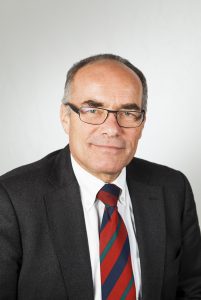Editorial
The new year opened with some important changes at Mining Report Glückauf. So we have decided to alter the content structure of the magazine in that we integrated the staff news in the “News” section and post-mining activities will no longer be the focal theme of one issue each year but rather will feature more generally in each of the six annual editions. In doing this we highlight the special significance of the work that is being done to manage the legacy of the mining industry. In this context the current issue discusses the employment drive under way in Germany’s former coalfield regions, reports on how know-how is being transferred from the Research Center of Post-Mining at the TH Georg Agricola University to China and describes the efforts being made to secure disused and abandoned small-scale mine workings in Mongolia.
Of course this does not mean that mining per se is to be sidelined. Transport equipment, e. g., is not only crucial for the German engineering sector in general but, along with mineral winning machinery, also constitutes one of the most important technologies for the surface and deep mining industry. This is one of the reasons why the Institute of Mining Engineering at Clausthal University of Technology organises an in-house colloquium on this topic every two years, the most recent having taken place in 2020. Transport technology has therefore been chosen as the main theme of this edition of Mining Report Glückauf.
The underground mining of potash and metal ores would be unthinkable today without the availability of trackless vehicles for transport and haulage duties. While in the past most of this work was performed by diesel-powered equipment, innovative technology in the form of batteries, electric motors and drive control units has meant that the trend is now moving towards all-electric vehicle drive systems.
Belt conveyor systems are another important option for transport operations in mining. Some of the products being transported, however, can present problems both for the conveyor installation itself and for connected transfer chutes in the form of increased levels of wear and tear that can damage the installation components and affect the integrity of the payload material. The introduction of an alternative and more dynamic design of transfer chutes will result in improvements in this area.
In many parts of the world surface mining is carried out under extreme climate conditions. Severe frosts in winter and intense heat in summer mean that the operators of open-pit mines are faced with some difficult challenges, such as ensuring that their equipment is running with the correct type of lubricant.
A paper on numerical simulation rounds off this latest issue. NS technology provides a cost-effective approach to planning and optimising mining-related operations and the article in question describes how numerical simulation can be used to improve face productivity.
With my best regards
Dipl.-Ing. Andreas-Peter Sitte
Chief Editor Mining Report Glückauf, Essen
